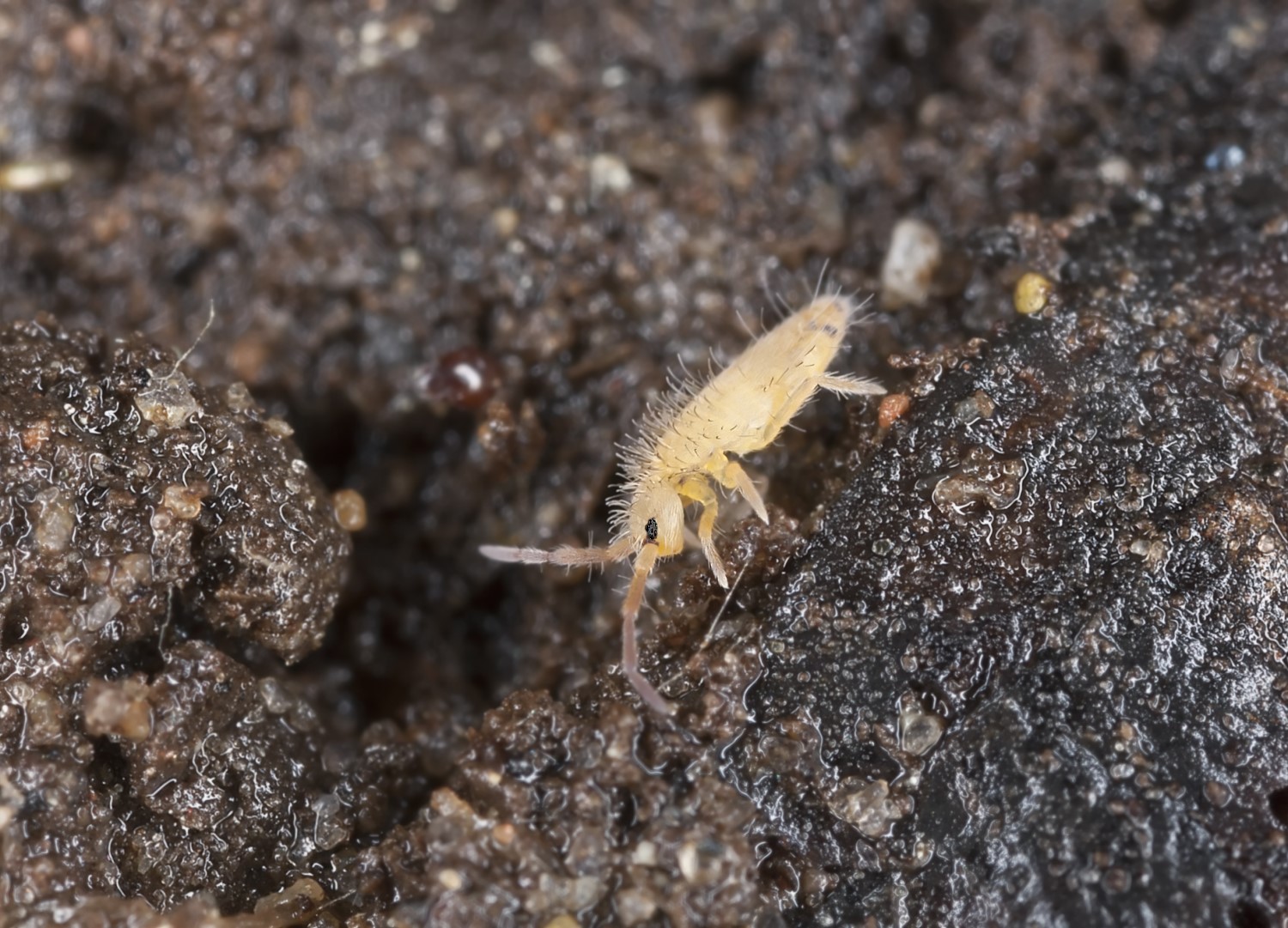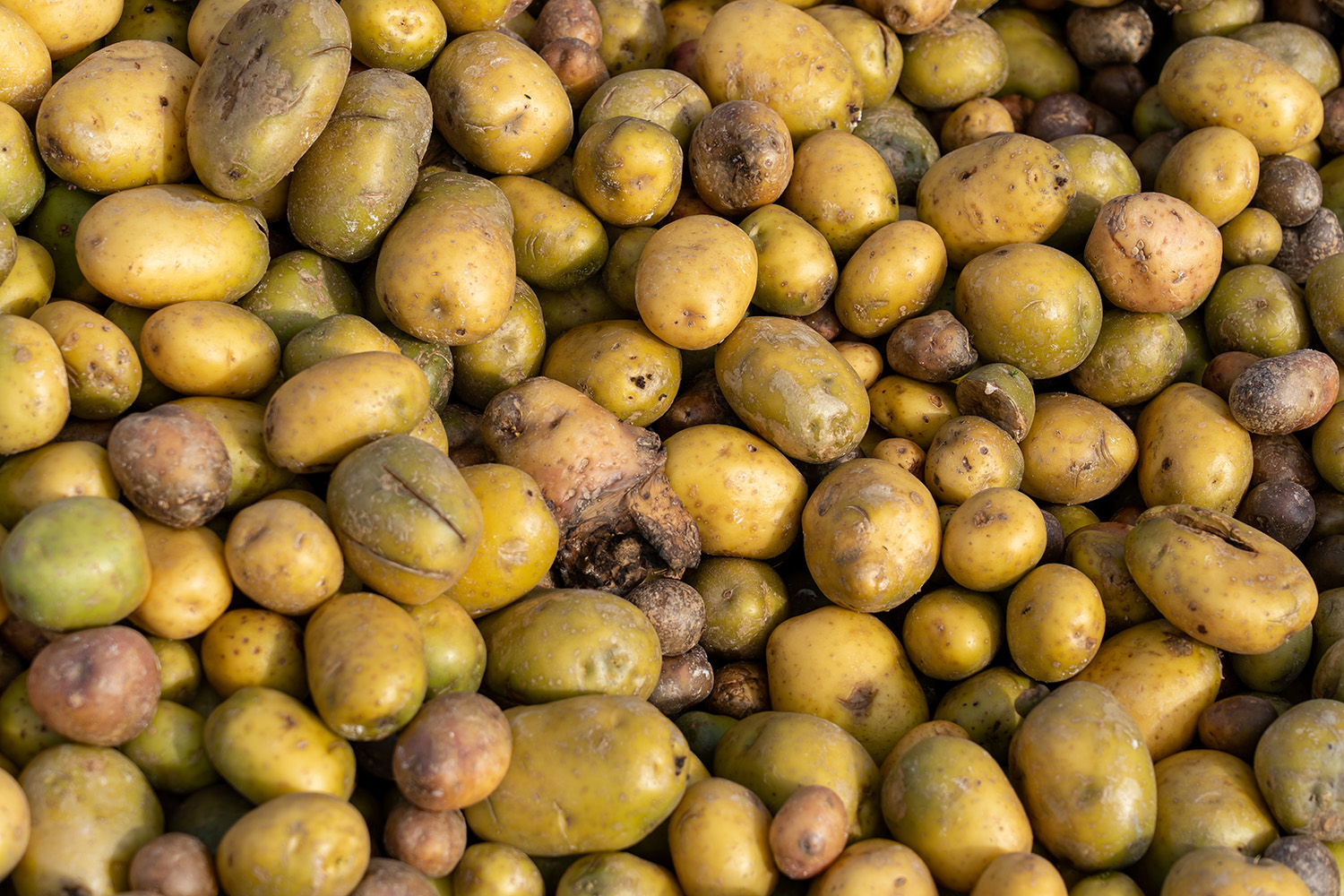
Longread
The right cocktail to combat diseases and pests using fewer pesticides
Weeds, fungi, nematodes and insects all cause problems for arable farmers during the production of their crops. The use of chemical pesticides tends to be the preferred option in conventional agriculture, but that option is increasingly subject to restrictions. How can farmers identify the ideal mix of measures for their particular circumstances? WUR is developing an Integrated crop management dashboard for that very purpose.
Some crops are susceptible to damaging fungi, while others are affected by certain beetles or weeds. Onions fall into the latter category, because they grow slowly. That slow growth gives weeds plenty of time to make their unwelcome appearance. The simplest solution has always been to use chemical pesticides. But that’s about to change, because the most effective product has made the list of substances that the European Union wants to replace with methods that are less harmful to the environment and to our health.
We need to find alternatives for many other crops and problems too. A few years back, this wasn’t the case yet. “It wasn’t so urgent then, because the resources available to us were adequate,” says Hilfred Huiting, who researches soil pests. His work involves studying scientific literature, professional journals and experiments to gather information on how to select the best strategy against soil-borne diseases and pests, using as few pesticides as possible. This is in line with the European Farm to Fork strategy, which states that the risk and use of chemical crop protection agents should be halved by 2030. In 2017, the Ministry of Agriculture, Nature and Food Quality included this in its vision for circular agriculture.
Demand for alternatives
As we approach 2030, this issue is becoming increasingly prominent within the
agriculture sector. “Farmers are noticing that things are getting more
complicated,” says Huiting. “We’re getting feedback on this in the sector. Some
of them are asking for new chemical products, while others accept that they
need to take a different approach and are asking for alternatives. They want to
better understand the issue and to know what their options are.”
‘Farmers are increasingly having difficulties. They want to know their options’
That’s why Huiting and his colleague Marleen Riemens are developing the Integrated Crop Management approach. It’s a way of redesigning cultivation systems in such a way that diseases, pests and weeds have virtually no chance to get a foothold, while still minimising the use of chemical products. “You have to carefully consider which products to use, and when to use them. They can’t be products that are on the European list to be replaced,” says Huiting.
Researchers at the WUR site in Lelystad have been working on Integrated Crop Management for years, on clay soil. It soon became clear that a project based aimed at arable farming on sandy soils would also be appropriate. This resulted in a public-private partnership that started in 2020 at the WUR site in Vredepeel. Riemens is leading this project. When this led to questions related to the biology of soil pests, Huiting’s project was born. Since 2022, Huiting has been studying pests such as wireworms, leatherjackets, garden centipedes and springtails, all of them creatures that infest crops below ground level.

Choosing a strategy
For each combination of a particular crop and a disease, pest or weed, Huiting and Riemens, along with their colleagues, piece together an intricate puzzle. They hope this will lead to an optimal strategy that can address every problem and provide a solution that will remain effective for a number of years. For example, it might involve the sequencing of crops across consecutive years, the selection of resistant crop varieties, and determining when and where to spray. “It’s about searching for the best mix of measures,” says Huiting, “and keeping in mind that one measure can exclude another in terms of space or time.” The results of the trials reveal not only the extent to which a particular strategy can reduce the use of chemical pesticides, but also how that strategy affects yield, quality, labour and costs.
- Unfortunately, your cookie settings do not allow videos to be displayed. - check your settings
For potatoes, the puzzle revolves mainly around two problems: nematodes in the soil and the fungi Phytophthora infestans and Alternaria solani. Chemical control isn’t really a viable option for nematodes, but it does work for the fungi. “Farmers are really engaged with this, because there’s so much risk attached. For Phytophthora, preventive spraying is common because, once the damage is visible, it’s already too late. Within a week, all your potatoes may be affected. As a result, farmers play it safe. Plus, it takes time to thoroughly check the potatoes,” explains Huiting.
Two resistent varieties
The researchers opted for an eight-year crop rotation, with potatoes making two appearances. The other years will feature sugar beets, onions, carrots, maize and barley. With potatoes, the specific variety is an important piece of the puzzle. Huiting and Riemens selected two resistant varieties for the two years that potatoes are to be grown. The first of these is resistant to nematodes, and the second to phytophthora. This is because the latter would only be possible once the nematode population has declined. One of the things the study is expected to reveal is whether choosing a variety with nematode resistance once every eight years is enough to keep the population in check.

The researchers are also taking other measures to combat the fungus-like phytophthora. As expected, it proved impossible to totally avoid spraying against phytophthora. There would be a risk of the fungus adapting and the resistant variety could, subsequently, still become susceptible. At the moment, it’s common to spray every week. As such, the researchers wondered whether there was a middle road. “These kinds of fungi like damp weather, so that’s when the risk is greatest. If it’s dry for several weeks in a row, you don’t really need to spray.”
The aim is to ensure that diseases, pests, and weeds have almost no chance, while the crop can be grown with as few chemical inputs as possible.
Trials showed that the frequency of spraying could be reduced by up to half. The trick was to keep a close eye on the weather, so that spraying could be better timed. Huiting and Riemens developed systems for this which monitored crop growth and the likelihood of disease emergence, while also taking the weather forecast into account.
Biology of insects
“For each crop, we look at where we stand to gain the most,” he continues. “Potatoes, for example, are less susceptible to weeds than onions.” As such, the strategy doesn’t need to specifically focus on this. Insect damage, on the other hand, is something to concentrate on. These insects include aphids and Colorado potato beetles, for example. “We can usually control aphids with natural enemies, but the Colorado potato beetle is challenging.”
Huiting is researching the habits of the Colorado potato beetle and is trying to extract useful information to help control the pest. “For example, we don’t yet know exactly how the beetles overwinter. Once we better understand that, we might be able to devise targeted measures to reduce their numbers in the next season. A preventative approach, in other words.” He also wants to use cameras to identify hotspots where the beetles are most prevalent. It may be enough to spray only those areas rather than entire fields.
Dashboard with tabs
The idea is that farmers should soon have access to a kind of dashboard with tabs,
so they can instantly see what combination of measures they could use. The tabs
will be grouped by topic: crop diversity in terms of space and time, variety
and cultivation method, soil management, targeted pest control, and monitoring
and evaluation. Behind each tab, farmers will be able to find information about
the measures they can take. Over the next few years, the researchers aim to make
even more improvements to the dashboard.
The outcome of the trials also shows how this strategy affects yield, quality, labor, and costs.
Does Huiting think a 50 per cent reduction in pesticides is possible? “The simple answer is yes.” However, this does require farmers and consumers to be flexible. “Farmers should be open to adjusting their strategy more often and be willing to accept less stable yields. Ultimately, it's about income across multiple years. Even so, some crops may no longer be financially viable,” says Huiting. Those would then disappear from the Netherlands. In supermarkets, consumers will notice that the availability and quality of certain products becomes less consistent. “So yes, it’s certainly feasible, but there are consequences to reducing or eliminating spraying. We all need to be aware of that.”